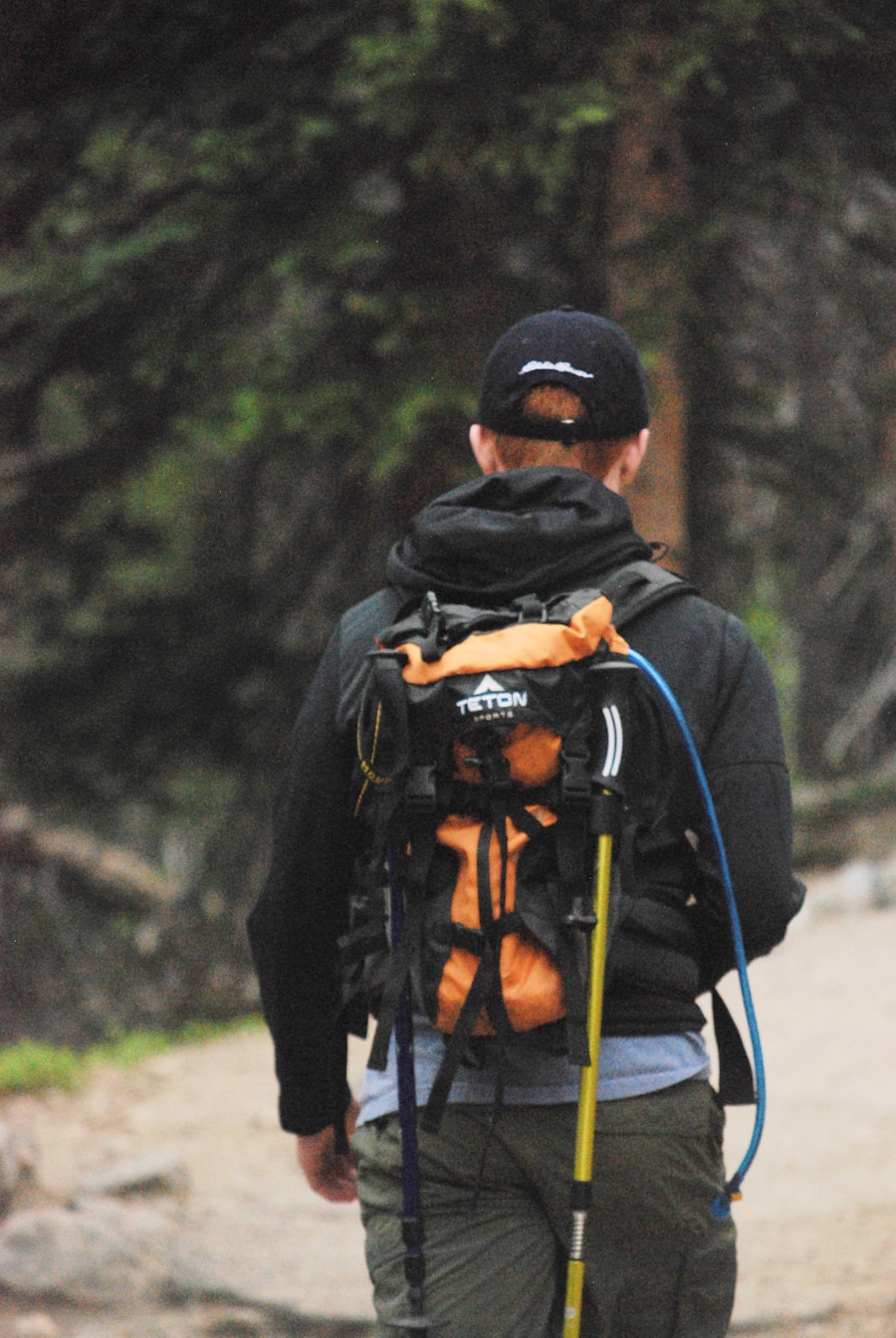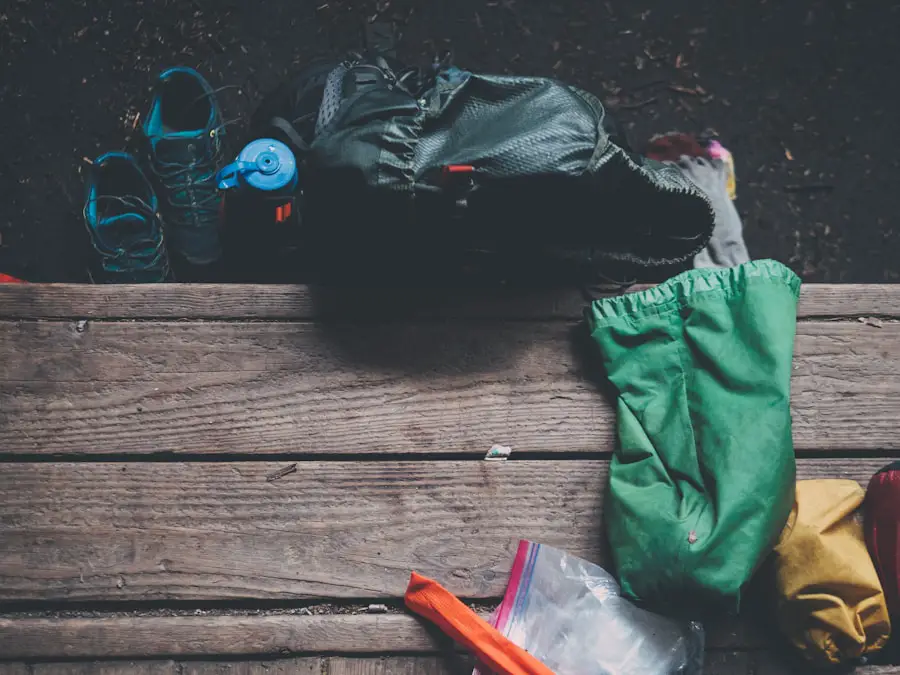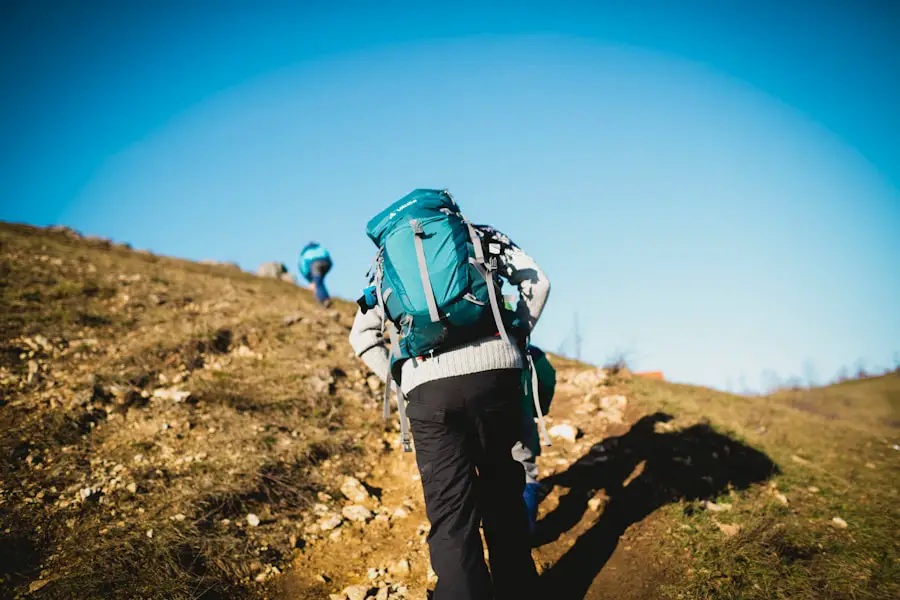Selecting the appropriate backpack is a critical first step for any outdoor adventure, whether it be a day hike or an extended trek. The right backpack not only carries your gear but also contributes significantly to your comfort and overall experience. When choosing a backpack, consider the size and capacity that aligns with your needs.
Backpacks are typically measured in liters, with daypacks ranging from 20 to 30 liters, while multi-day packs can go from 40 liters to over 70 liters. A daypack is ideal for short excursions, allowing you to carry essentials like water, snacks, and a first aid kit without being cumbersome. Conversely, if you plan to camp overnight or embark on a longer journey, a larger pack will be necessary to accommodate sleeping gear, cooking supplies, and extra clothing.
Another crucial aspect of selecting a backpack is the fit. A well-fitted backpack distributes weight evenly across your body, reducing strain on your back and shoulders. Most backpacks come in various sizes to cater to different torso lengths, so it’s essential to try them on and adjust the straps accordingly.
Look for features such as padded shoulder straps, a hip belt, and a sternum strap, which can enhance comfort and stability. Additionally, consider the material and design of the backpack; waterproof or water-resistant materials are beneficial for protecting your gear from unexpected rain. Pockets and compartments can also help organize your items efficiently, making it easier to access what you need without rummaging through your entire pack.
Key Takeaways
- Choose a backpack with the right size, fit, and features for your hiking needs
- Invest in high-quality, waterproof boots, moisture-wicking socks, and gaiters for added protection
- Layer clothing for versatility and protection from the elements, including a waterproof jacket and pants
- Carry navigation tools such as maps, a compass, and a GPS device for safe and efficient hiking
- Pack safety and first aid essentials, including a first aid kit, emergency whistle, and personal medication
Footwear: Boots, Socks, and Gaiters
Fit and Support: The Key to Comfortable Hiking
When it comes to hiking boots, fit and support are crucial. A boot that is too tight can cause blisters and discomfort, while one that is too loose may lead to instability on uneven ground. It’s advisable to try on boots with the socks you plan to wear during your hike, as this can affect the overall fit. Look for features such as ankle support, waterproofing, and traction soles that provide grip on slippery surfaces.
The Importance of Socks in Foot Comfort
Socks play a vital role in foot comfort as well. Merino wool socks are popular among hikers due to their moisture-wicking properties and ability to regulate temperature. They help keep your feet dry and warm in cold conditions while remaining breathable in warmer weather. Avoid cotton socks, as they retain moisture and can lead to blisters. Additionally, consider wearing liner socks underneath thicker hiking socks for added protection against friction.
Accessories for Added Protection
Gaiters are another useful accessory that can protect your legs from mud, water, and debris while hiking. They wrap around your lower legs and can be particularly beneficial in wet or snowy conditions, preventing moisture from entering your boots.
Clothing: Layers and Protection from the Elements

When it comes to outdoor clothing, layering is key to adapting to changing weather conditions and maintaining comfort throughout your adventure. The three-layer system—base layer, mid-layer, and outer layer—provides flexibility and insulation while allowing moisture to escape. The base layer is designed to wick sweat away from your skin; materials like merino wool or synthetic fabrics are excellent choices for this purpose.
A good base layer keeps you dry and comfortable during physical exertion. The mid-layer serves as insulation, trapping heat while still allowing moisture to escape. Fleece jackets or down vests are popular options for this layer, providing warmth without excessive bulk.
Depending on the climate, you may choose to add or remove layers as needed. The outer layer is your shield against wind, rain, and snow; look for waterproof or water-resistant jackets that also offer breathability. Features such as adjustable hoods, cuffs, and ventilation zippers can enhance comfort during varying weather conditions.
In addition to layering, consider the specific environmental factors you may encounter on your trip. If you’re hiking in an area with high UV exposure, lightweight long-sleeve shirts and pants made from UPF-rated fabric can protect your skin from harmful rays. Similarly, if you anticipate rain or snow, waterproof pants can keep you dry while allowing for movement.
Accessories such as hats and gloves are also essential for protecting extremities from cold temperatures or sun exposure.
Navigation Tools: Maps, Compass, and GPS
| Navigation Tools | Usage | Advantages | Disadvantages |
|---|---|---|---|
| Maps | Used by hikers, travelers, and drivers | Provides a visual representation of the area | May be outdated, requires interpretation |
| Compass | Used in orienteering, hiking, and military operations | Works without batteries, reliable in remote areas | Requires knowledge of navigation, affected by magnetic interference |
| GPS | Utilized in smartphones, cars, and outdoor activities | Provides real-time location, accurate navigation | Dependent on satellite signal, may have limited coverage in remote areas |
Navigating the great outdoors requires reliable tools to ensure you stay on course and reach your destination safely. Traditional maps remain invaluable resources for understanding terrain features, trails, and landmarks. Familiarizing yourself with topographic maps can provide insights into elevation changes and potential hazards along your route.
When using a map, it’s essential to know how to read it effectively; understanding symbols and scales will help you gauge distances and navigate accurately. A compass complements a map by providing directional guidance. Learning how to use a compass involves understanding how to take bearings and orient yourself based on landmarks or terrain features.
While GPS devices have become increasingly popular due to their convenience and accuracy, they should not replace traditional navigation skills. Battery life can be a concern in remote areas where charging options are limited; thus, having a physical map and compass as backup tools is prudent. Modern technology has introduced various GPS devices and smartphone applications that offer detailed maps and navigation features.
These tools can provide real-time tracking of your location and even suggest routes based on user-generated data. However, reliance solely on electronic devices can be risky; signal loss in remote areas or dead batteries can leave you without guidance when you need it most. Therefore, combining traditional navigation methods with modern technology ensures you are well-prepared for any situation.
Safety and First Aid Essentials
Safety should always be a top priority when venturing into the wilderness. Carrying a well-stocked first aid kit is essential for addressing minor injuries or emergencies that may arise during your trip. A basic first aid kit should include adhesive bandages of various sizes, antiseptic wipes or ointment, gauze pads, adhesive tape, tweezers for splinter removal, pain relievers like ibuprofen or acetaminophen, and any personal medications you may require.
Additionally, consider including items such as blister treatment pads and an emergency blanket for added protection against hypothermia.
In addition to a first aid kit, it’s wise to familiarize yourself with basic first aid procedures before heading out. Knowing how to treat common injuries such as sprains, cuts, or insect bites can make a significant difference in an emergency situation.Taking a wilderness first aid course can provide valuable skills that enhance your confidence in handling medical issues while away from immediate help. Beyond medical supplies, safety gear such as a whistle can be crucial in emergency situations where you need to signal for help. A whistle is more effective than shouting due to its ability to carry sound over long distances without exhausting yourself.
Additionally, carrying a multi-tool or knife can assist in various tasks around camp or during emergencies. Always inform someone of your planned route and expected return time before embarking on your adventure; this ensures that someone will know if you do not return as scheduled.
Hydration and Nutrition: Water, Snacks, and Meals

Staying hydrated is vital during any outdoor activity; dehydration can lead to fatigue, decreased performance, and even serious health issues. Carrying enough water is essential; depending on the length of your hike and environmental conditions, you may need anywhere from two liters per day for short hikes to more for extended trips. Water bottles or hydration reservoirs are popular choices among hikers; reservoirs allow for hands-free drinking through a tube while walking.
In areas where water sources are available along the trail, consider using water purification methods such as filters or chemical tablets to ensure safe drinking water. Understanding how to locate water sources on maps can also help you plan your hydration strategy effectively. Nutrition plays an equally important role in maintaining energy levels during outdoor activities.
Packing high-energy snacks such as trail mix, energy bars, or jerky can provide quick fuel when you need it most. For longer trips where cooking is feasible, consider lightweight meals that are easy to prepare yet nutritious; dehydrated meals are popular among backpackers due to their convenience and minimal weight. Planning meals ahead of time allows you to balance carbohydrates for energy with proteins for muscle recovery after strenuous activities.
Consider incorporating fruits or vegetables into your diet when possible; they provide essential vitamins while also helping with hydration due to their high water content.
Shelter and Sleeping Gear: Tents, Sleeping Bags, and Pads
Choosing the right shelter is crucial for ensuring a comfortable night’s sleep during outdoor adventures. Tents come in various styles—backpacking tents are lightweight and compact for easy transport while car camping tents offer more space but are heavier. When selecting a tent, consider factors such as weather resistance (look for waterproof materials), ease of setup (freestanding tents are often easier), and ventilation options (mesh panels help reduce condensation).
Sleeping bags are another essential component of camping gear; they come rated for different temperature ranges based on insulation type (down vs synthetic). A sleeping bag that is too warm can lead to discomfort during the night while one that is too cold may not provide adequate warmth in chilly conditions. It’s advisable to choose a sleeping bag that offers some versatility; bags with zippers allow for temperature regulation by opening them partially if it gets too warm.
Sleeping pads provide insulation from the cold ground while also adding cushioning for comfort during sleep. Inflatable pads offer excellent insulation-to-weight ratios but require inflation before use; foam pads are more durable but bulkier to carry. Some hikers opt for a combination of both types for added comfort without excessive weight.
Miscellaneous Essentials: Sun Protection, Insect Repellent, and Emergency Whistle
While often overlooked in packing lists, miscellaneous essentials play a significant role in ensuring a safe and enjoyable outdoor experience. Sun protection is vital regardless of the season; UV rays can cause sunburn even on cloudy days. Broad-spectrum sunscreen with an SPF of at least 30 should be applied generously before heading out and reapplied every couple of hours during prolonged exposure.
Insect repellent is another critical item when venturing into areas where mosquitoes or ticks may be prevalent. Look for repellents containing DEET or picaridin for effective protection against biting insects; applying repellent on exposed skin can significantly reduce the risk of insect-borne diseases. An emergency whistle serves as an invaluable tool in case of distress or disorientation while hiking; its loud sound can attract attention over long distances without exhausting yourself by shouting.
Carrying a small emergency kit that includes items like a whistle ensures you’re prepared for unexpected situations. By considering these miscellaneous essentials alongside other gear choices—such as clothing layers or navigation tools—you’ll enhance your preparedness for any outdoor adventure while prioritizing safety and comfort throughout your journey into nature’s embrace.
When preparing for a hiking trip, it’s essential to pack the right gear to ensure a comfortable and enjoyable experience. Along with items like water bottles and packing cubes, another crucial piece of equipment to consider is a high-quality sleeping bag. A good sleeping bag can make all the difference in getting a restful night’s sleep while out in the wilderness. For recommendations on the best sleeping bags for backpacking travel, check out this article.
Love travel? Join Our Facebook Community For More Tips.
FAQs
What are the essential items to pack for hiking?
Some essential items to pack for hiking include a map and compass, water and water purification system, food and snacks, appropriate clothing and footwear, first aid kit, multi-tool or knife, and a backpack to carry everything.
What type of clothing should I pack for hiking?
It’s important to pack moisture-wicking and breathable clothing for hiking, including a moisture-wicking base layer, insulating layer, and waterproof and windproof outer layer. Additionally, pack comfortable and supportive hiking boots or shoes, moisture-wicking socks, a hat, and sunglasses.
What kind of food and snacks should I pack for hiking?
Pack lightweight and high-energy snacks such as trail mix, energy bars, nuts, and dried fruits. For meals, consider packing lightweight and easy-to-prepare options such as dehydrated meals, instant oatmeal, and freeze-dried fruits and vegetables.
What safety items should I pack for hiking?
Safety items to pack for hiking include a first aid kit, emergency whistle, headlamp or flashlight with extra batteries, fire starter, and a multi-tool or knife. It’s also important to pack a map and compass, and to let someone know your hiking plans before you head out.
What other essential items should I pack for hiking?
Other essential items to pack for hiking include a water and water purification system, sunscreen, insect repellent, a lightweight and packable emergency shelter, and a fully charged cell phone or satellite communication device.
